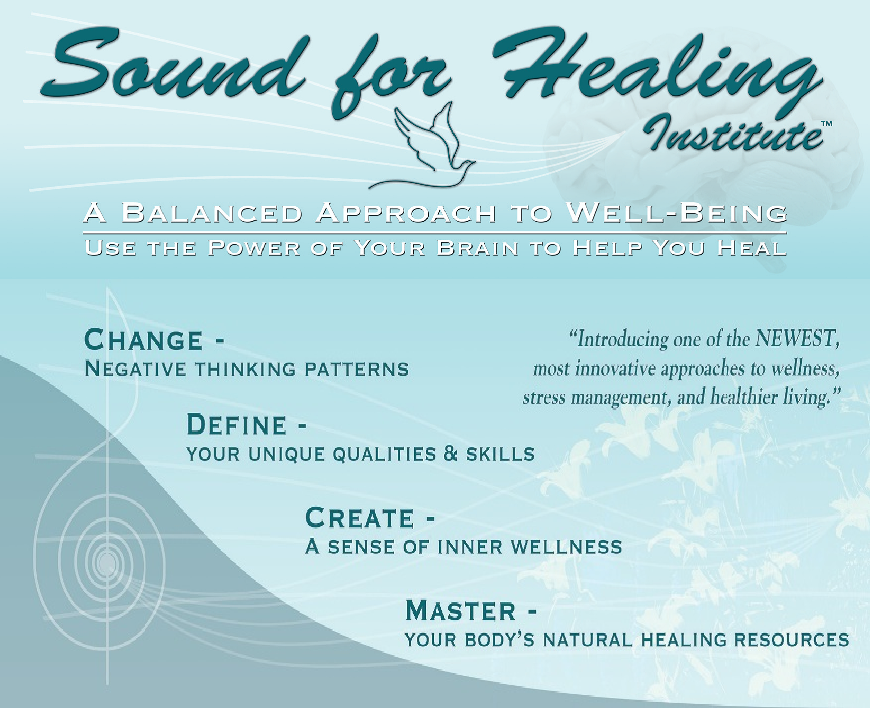
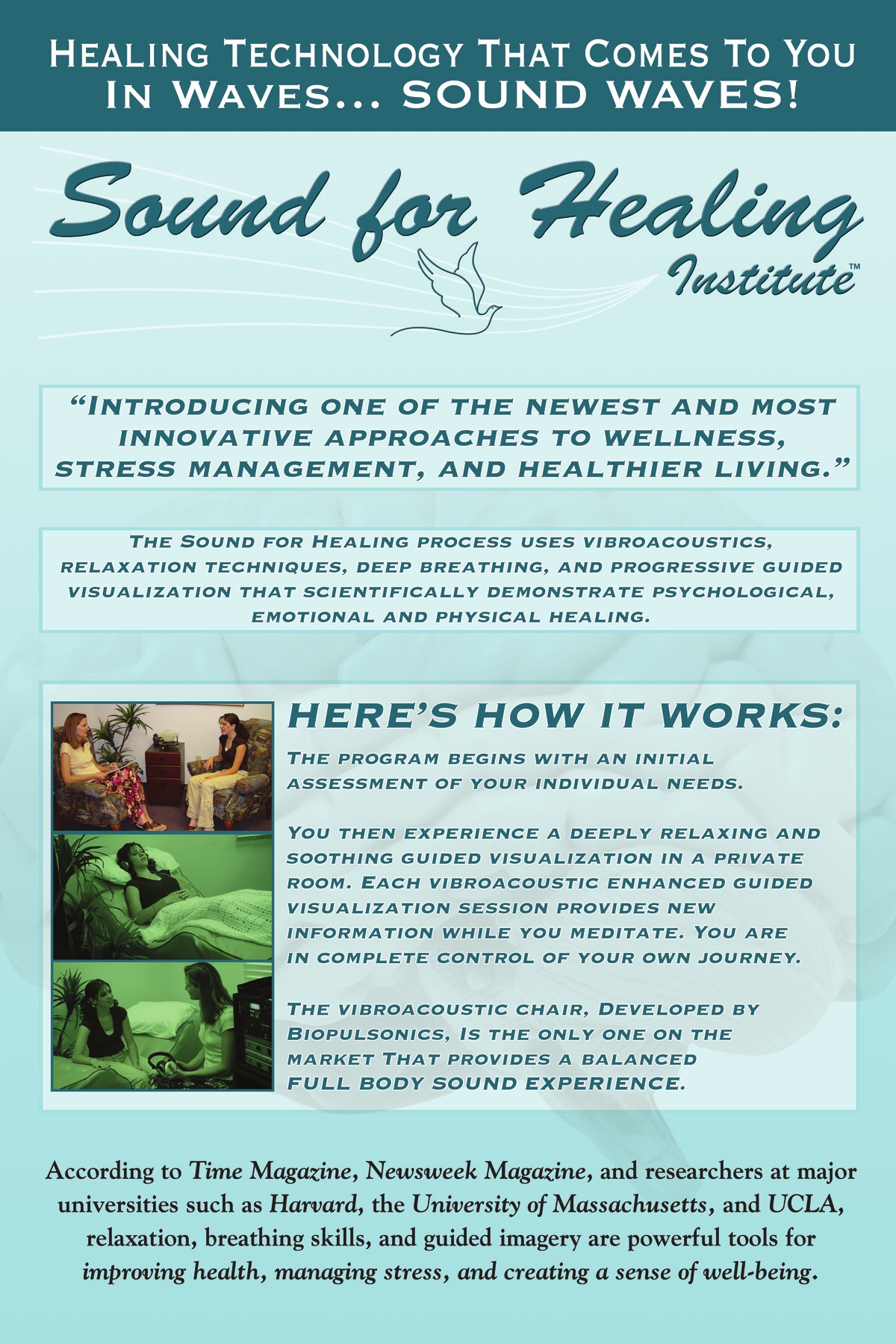
Our sound therapy program was designed to address mental health issues in an outpatient clinic by utilizing guided imagery, cognitive strategies, and systematic desensitization. To enhance the benefits of these psychological tools, we have explored the newest technology in brainwave entrainment and vibro-acoustics. We have found that this technology proves to be a powerful complement to the effectiveness of an already empirically validated approach to psychotherapy.
Physicians and psychologists have known for many years that emotional states and psychological stress have profound effects on physical health. Hundreds of studies have validated the positive effects of guided imagery, cognitive strategies, and systematic desensitization on physiological conditions as well as psychological disorders. Our sound therapy program utilizes these strategies by accessing and empowering the patient's own internal mechanisms for healing and recovery. The patient, therefore, benefits from the strategies and tools for symptom management, as well as gaining a sense of self mastery and personal responsibility in his or her own recovery.
Cognitive Strategies: Cognitive skill training for symptom management.
Psychoeducation: Homework assignments and workbook materials that accompany each visualization.
These tools and strategies are incorporated into digitally recorded media and presented through relaxation imagery scripts.
A study published in the IEEE Engineering in Medicine and Biology in 1999, by Dr. George Patrick of the National Institute of Health, researched the effects of vibroacoustic music on symptom reduction and found the following: 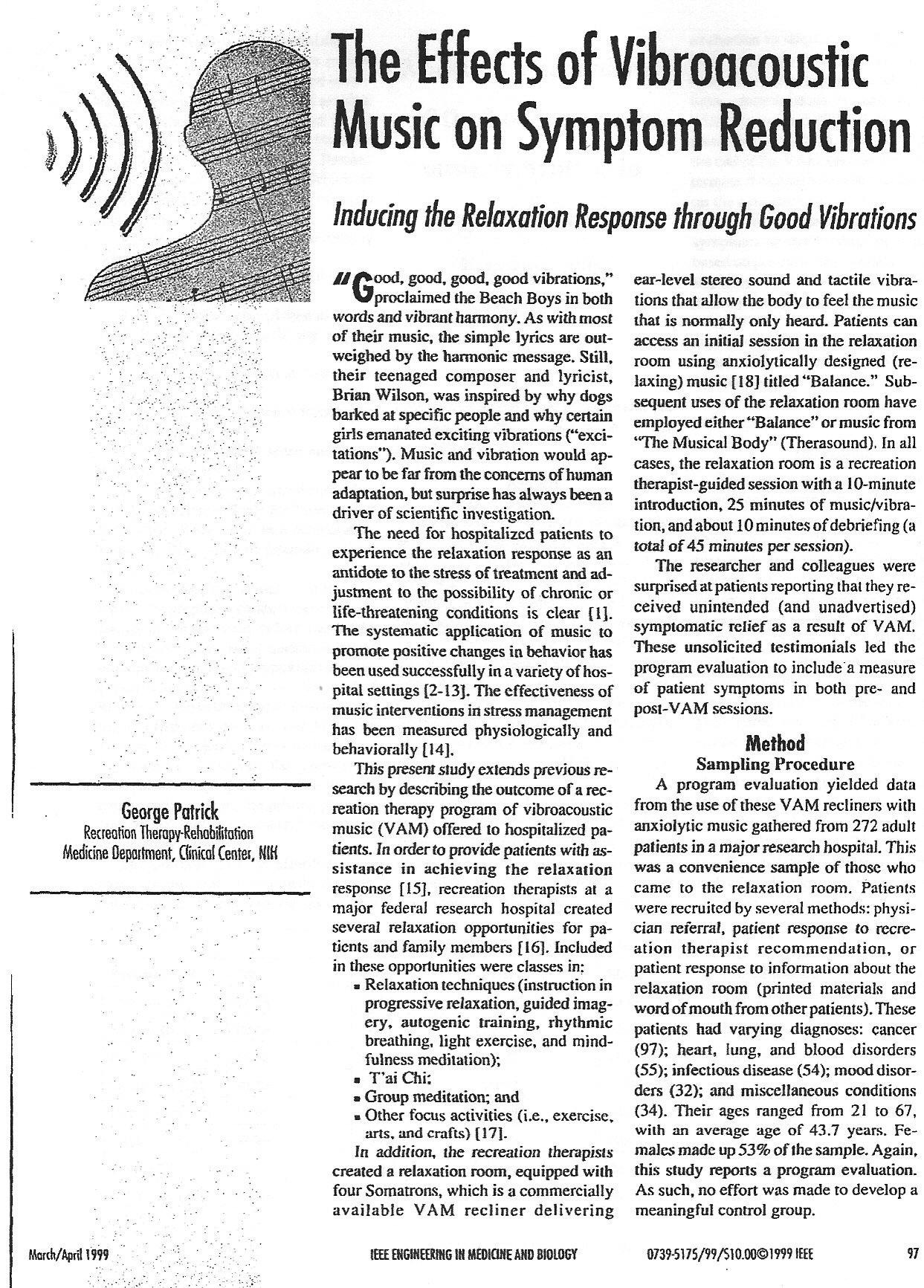
v 61% decrease in nausea pre- and post-testing
v 58% reduction in headaches
v 54% reduction in tension-anxiety
v 53% reduction in pain
v 49% reduction in depressed mood
v 47% reduction in fatigue
These results suggest that vibroacoustic sound is valuable in reducing symptoms of hospitalized patients since “multiple mechanisms of the body may use music/vibration to regain a healthy homeostasis.” He suggests that “if the super-high-frequency vibrations of light affect our mood states and biological time clocks, how far afield is it to suspect that music and vibration (at much lower frequencies) have effects on psycho-neurophysiology?”
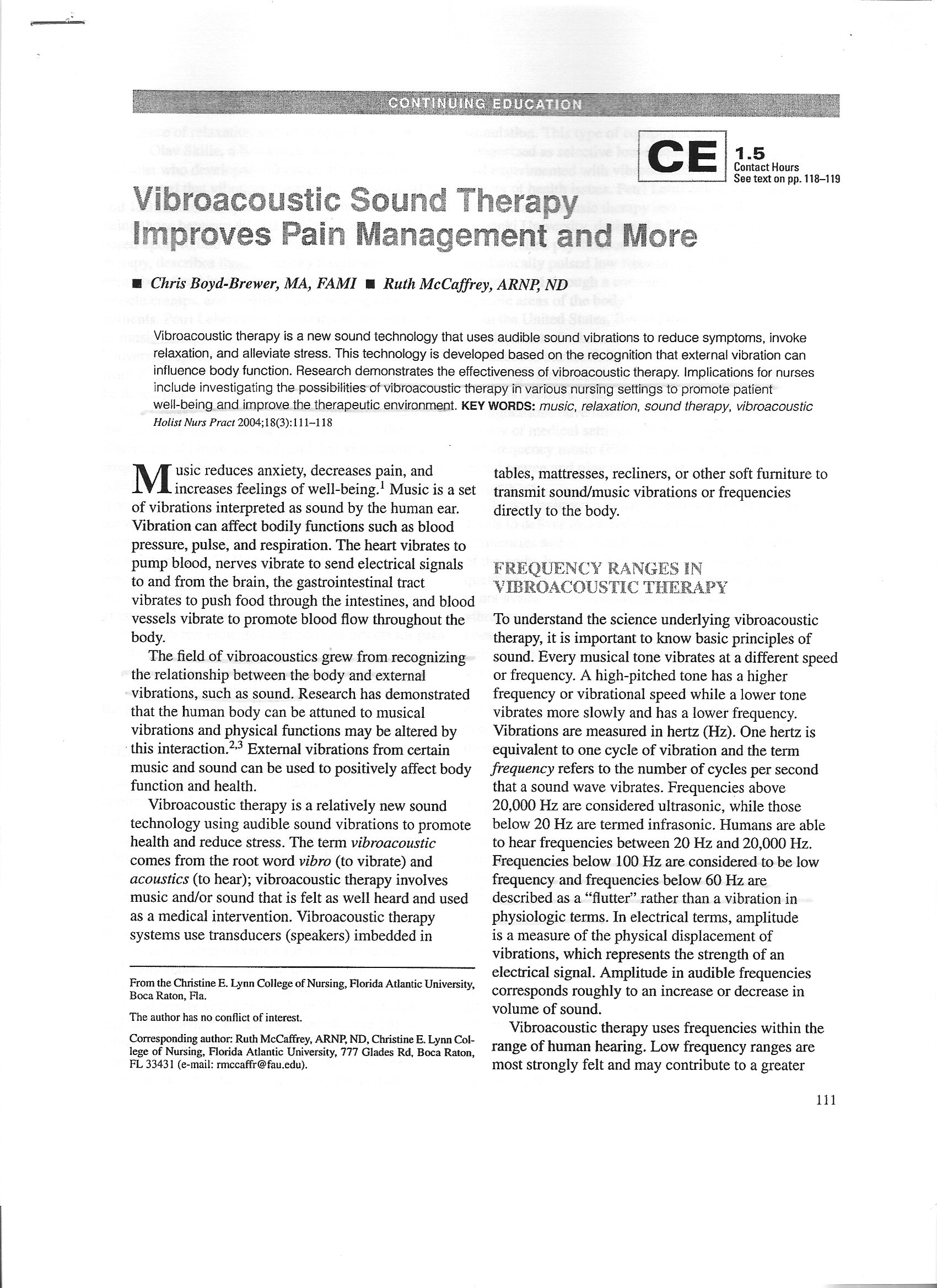
- The brain learns to match low frequency sound waves.
- By listening to low frequency sound waves, the brain easily shifts from high frequency beta waves to lower frequency alpha or theta waves, which results in feelings of relaxation.
- Low frequency sound waves are delivered through headphones while listening to the guided imagery scripts.
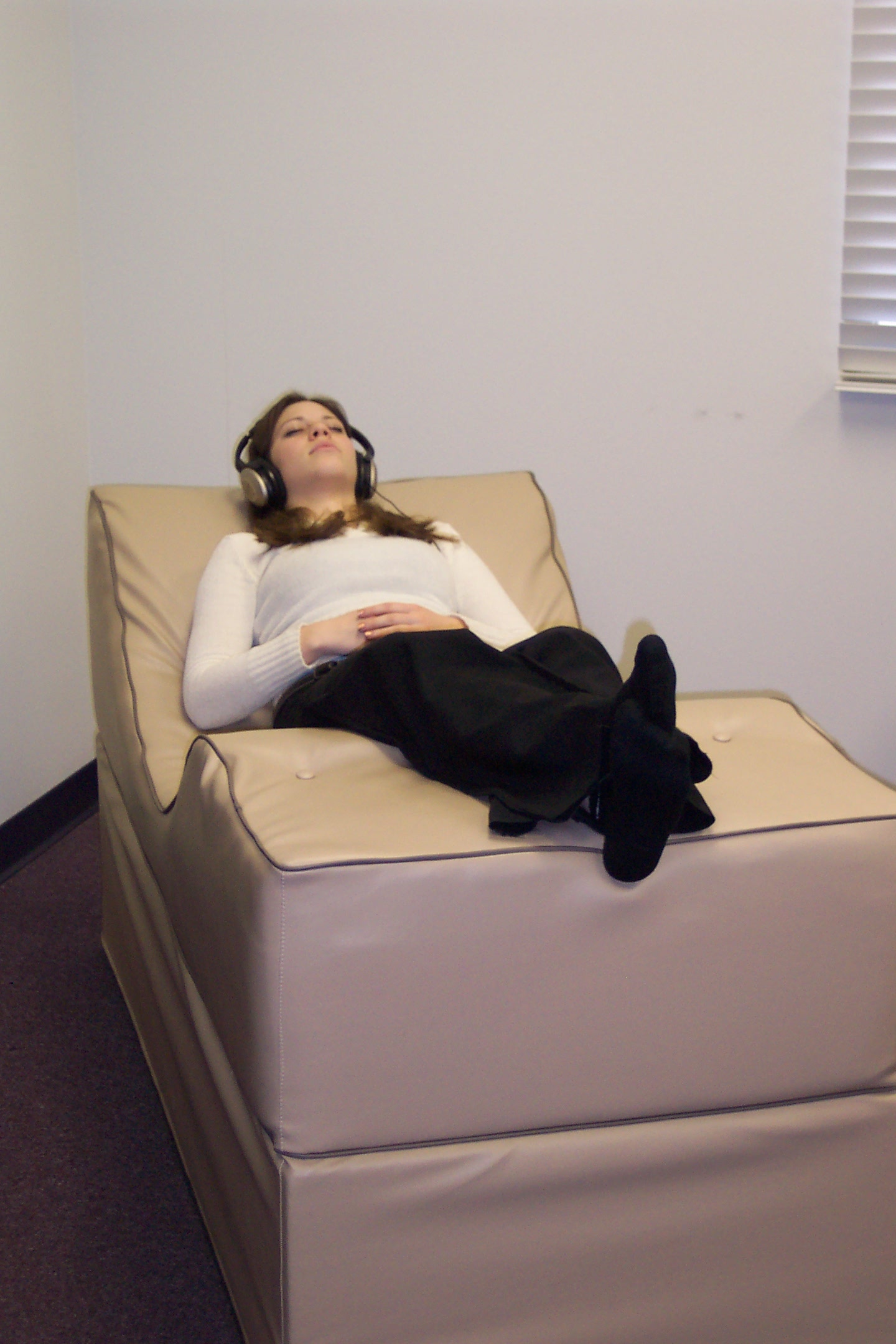
Our vibro-acoustic bed was specifically designed for our sound therapy programs by Biopulsonics, an innovative new company that specializes in developing systems by utilizing the cutting edge technology in vibro-acoustic research.
The patient relaxes on a sound bed with specifically designed transducers that emit low frequency pulses. This aids the patient in achieving the ultimate relaxation experience.
-
The learned skills can be used post-treatment to maintain the therapeutic success.
-
Sound therapy is pleasant, enjoyable, relaxing, and energizing.
-
Patients are empowered through this self-directed program and have long-lasting results.






